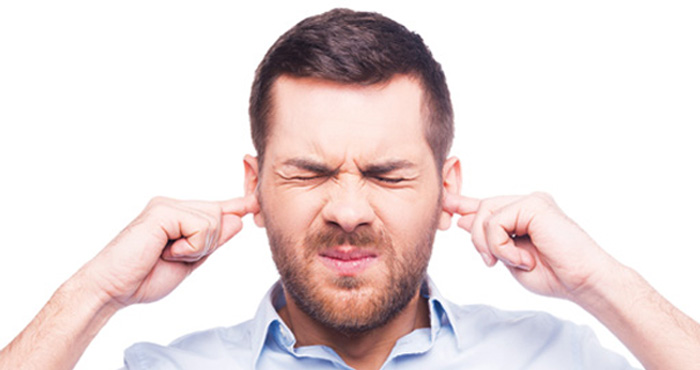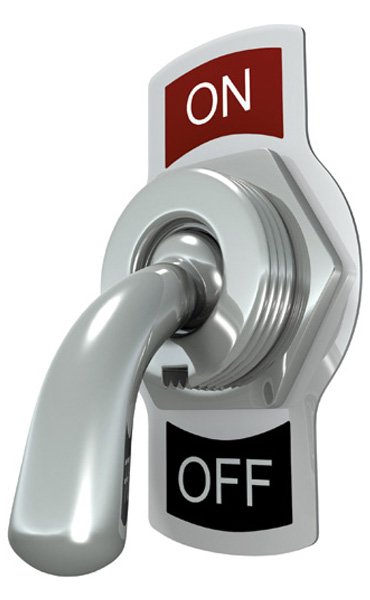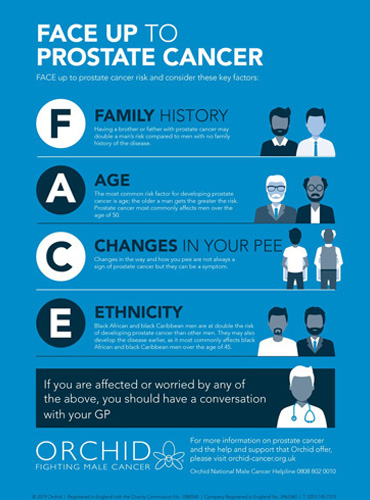Getting through
Record learning outcomes
Talking to men about health matters can sometimes seem like hard work – so how can pharmacy teams check on their male customers without being seen to make a fuss?

Learning objectives
After reading this feature you should be able to:
- Identify what lifestyle advice should be targeted at men
- Engage more effectively with men when they come into the pharmacy
- Manage some of the common minor health conditions affecting men.
For almost every major health condition, the incidence, severity and outcome are worse for men – yet the NHS seems to be indifferent to men’s health inequality, says Des Spence, a Glasgow GP writing in the British Journal of General Practice in February. “Men’s health problems are often dismissed as an effect of their own irresponsible actions, but the truth is that men are suffering – only largely in silence.”
According to the Global Action on Men’s Health (GAMH) report on self care (Who Self-cares Wins) in April 2019, men’s self-care practices and risk factors, such as smoking, alcohol consumption and unhealthy diets, are worse than women’s, and neither men’s health nor self-care are strategic health priorities globally or nationally.
Many men do monitor their health and make conscious decisions about their lifestyle and self-care practices, but overall health literacy among men is still lower than that among women. Men are less likely to acknowledge when they are ill and seek appropriate help. According to the GAMH report, men have lower levels of awareness of high blood pressure and are less able to provide an accurate estimate of the alcohol drinking guideline for their own sex. They are also less likely to ‘know their numbers’ in relation to blood pressure, cholesterol and body mass index,and to take up opportunities for health screening.
Improving health knowledge
Men are more likely to show interest in self-care and self-management support when it is seen as action-oriented, having a clear purpose and offering personally meaningful information with practical strategies that can be integrated into daily life, the GAMH report says. To tap into this interest, the Men’s Health Forum (MHF) has a new interactive manual, Man MOT, which enables men to check their own health and challenges them to do better with 25 health tasks.
Sport can provide a hook that engages men in health-promoting activities, according to the GAMH report, and there have been many successful interventions based on football, rugby, hockey and other sports. In October 2019, the World Health Organization (WHO) and football’s world governing body, FIFA, agreed a four-year collaboration to promote healthy lifestyles through football globally. Plans include tobacco-free environments at FIFA events and joint programmes and initiatives to increase participation in physical activity through football.
Health inequality
While there is a big difference in deaths from suicide, heart disease, diabetes and cancer between men and women, a geographical inequality also exists between men living in different areas.
As part of Men’s Health Week 2019, MHF called for local action to tackle an almost 10-year average gap in men’s life expectancy across local authorities in England and Wales. The charity recommends that every area should have a Men’s Health Action Plan, including extra support for mental health and suicide prevention, targeted NHS health checks and better-tailored programmes designed to reach men in the greatest need.
The biggest gap is between Warfield Harvest Ride census ward in Bracknell Forest, which has a male life expectancy of 90 years, and Bloomfield ward in Blackpool, which has a male life expectancy of 68 – a difference of 22 years.
The biggest gap in a single local authority was in Wrexham, which showed a 17-year gap in men’s life expectancy between the Marford and Hoseley census ward and Gwersyllt West census ward.
The biggest gap in a local authority in England was in North Somerset, which showed a 16-year gap in men’s life expectancy between the Gordano ward and Weston-super-Mare Central.
In London, the biggest gap was in Westminster with a 14-year male life expectancy gap between Knightsbridge and Belgravia ward and Westbourne ward.
“Local areas, such as Leeds, have started with a robust analysis of the particular men’s health challenges in their localities,” says Martin Tod, chief executive of the MHF. “They have a particular focus on the men with the worst health – because they can vary significantly by area – and have put together plans that tackle those issues, with outreach to the men with the worst health and support to help them improve their health.
“It is relatively straightforward for pharmacists to find the data for their particular ward and it probably won’t be a huge surprise to them. Pharmacies can use the data to think about the services they offer and whether they could do more to encourage men to access these, especially health checks.”
Digital health
Men often find conventional primary care services difficult to access. Booking systems can be hard to use and appointments may not be available at convenient times because of work commitments. According to the GAMH report, greater digital access could be particularly beneficial for men and the internet has become an important tool for men seeking health information.
Many GP practices already offer digital services, such as online booking and text message reminders for appointments. The NHS app is intended to make navigating primary care services even easier for patients, enabling them to book appointments, order prescriptions and check their medical records on their smartphone.
There are many wearable devices and apps that could benefit men’s health, but it can be difficult for healthcare professionals to know which ones to recommend. The NHS Apps Library features validated apps to cater for all aspects of health. Most listed apps aren’t gender-specific, other than the Squeezy for Men app (pelvic floor exercises).
Men’s Health UK magazine regularly features health apps that will be of interest to men. These include workout and fitness trainers, nutrition and diet trackers, mental health and mindfulness, sleep and symptom checkers. There are also several websites featuring health information, such as Men’s Health Forum, Movember UK and Men’s Health UK magazine itself.
“With research showing that, on average, men wait nine months before seeking help, the wealth of information available online means that they can turn first to the internet to find out more,” says Pfizer’s Kristie Sourial. “However, this does not replace seeking advice from a trained professional, such as a pharmacist, who will be qualified and better equipped to provide help.”

Primary care services
Men generally under-use health services, particularly in primary care, and are less likely to participate in free health checks. Stuart Gale, chief pharmacist and owner of oxfordonlinepharmacy.co.uk, says that asking men about their sex life may help to engage them in conversation. “If you focus on weight and blood pressure they’re not interested,” he says, “but if you ask them whether they are affected by erectile dysfunction and tell them you have ways of treating it, you have an engaged patient.”
According to the GAMH report, the sildenafil POM to P switch, as well as the availability of various online services, may help to attract more men to pharmacies. “Premature ejaculation is a key topic, alongside erectile dysfunction,” says Natalie Masters, a pharmacist independent prescriber at Boots. “Another common reason for a visit is hair loss, with male pattern baldness being the most common form. Enlarged prostate is another issue men visit a pharmacy for and they may feel awkward talking about the symptoms. However, our colleagues are trained to help customers feel comfortable having these conversations with us.”
In March 2019, a year after the launch of OTC Viagra Connect, Pfizer Consumer Healthcare launched its Men Reconnected campaign, to encourage men to better understand their health, bodies and relationships. According to Kristie Sourial, former community pharmacist and now senior medical manager at Pfizer Consumer Healthcare, it is important that pharmacists approach the subject sensitively and offer to take the consultation to a private room.
“Often conversations around general health can be the bridge to discussing erectile problems,” she says. “Research has also shown what has been termed the ‘Viagra Connect effect’. Seventy-two per cent of men surveyed over 40 years who have sought advice for erectile problems admit to paying more attention to their health and taking active steps to improve it, such as being more aware of their heart health (37 per cent), eating less sugar (44 per cent), exercising more (43 per cent) and managing their cholesterol (41 per cent).”
Tying in with national men’s health campaigns may help to attract the attention of customers. This month sees the return of Movember, the annual month-long fundraiser challenging men across the UK to grow a moustache, raising awareness and funds for men’s health issues. The Movember charity recognises that globally, men are dying six years earlier than women due to common health issues such as prostate cancer, testicular cancer, mental health and suicide. Movember is aiming to reduce the number of men dying too young by 25 per cent by 2030.
“Many men still have the idea that it is not OK to talk about their health problems, even when it comes to their cancer risk,” says Movember founder Justin Coghlan. “The result is they often aren’t diagnosed with life-threatening illnesses until it is too late. Movember wants to challenge that idea and encourage men to be proactive about their health. We know that men are often reluctant to see their doctor but they might be less embarrassed about speaking to their pharmacist.
“We would love community pharmacists to get involved in Movember by having those potentially life-saving conversations with the men they come across during the “hairy month” whenever they can. It increases the chances of men taking up offers of physical checks such as blood pressure or cholesterol tests as well as encouraging them to get support for any mental health issues they have.”

Common conditions affecting men
Hair loss
Male pattern baldness affects more than half of men over the age of 50 years. It typically begins with a receding hairline, followed by hair loss around the temples and crown. It is caused by hypersensitivity to dihydrotestosterone (DHT), which then causes hair follicles to shrink. Although hair loss is often seen as a cosmetic problem, it can cause significant emotional distress.
There is no cure for male pattern baldness. It may be treated with finasteride tablets, which are available on private prescription, and topical minoxidil, which is available over the counter. Finasteride reduces levels of DHT. Men usually need to take finasteride every day for at least three months before they notice any benefits. Minoxidil needs to be applied directly to the affected areas of the scalp twice a day, every day. It works by increasing the blood flow to the scalp. Most men using minoxidil don’t notice any benefit for at least six months. With both finasteride and minoxidil, the benefit is only maintained while the treatments are being used.
Erectile dysfunction
 Erectile dysfunction is particularly common in men over 40 years. It is usually nothing to worry about and may be triggered by stress, anxiety or too much alcohol. However, persistent symptoms may be a sign of an underlying physical or emotional problem, including cardiovascular disease.
Erectile dysfunction is particularly common in men over 40 years. It is usually nothing to worry about and may be triggered by stress, anxiety or too much alcohol. However, persistent symptoms may be a sign of an underlying physical or emotional problem, including cardiovascular disease.
Sometimes erectile dysfunction can be improved with lifestyle changes, such as weight loss, smoking cessation, reducing alcohol consumption, regular exercise and stress management. Vacuum pumps provide a non-drug approach and there is some evidence that pelvic floor exercises may help in some cases.
Sildenafil, which helps to relax blood vessels in the penis, is available over the counter from pharmacies to treat erectile dysfunction in men over 18 years, as long as they meet certain criteria. There are several contraindications, including heart problems, liver disease and haemophilia, hence the need to have a consultation with the pharmacist.
Sports injuries
As men are encouraged to be more physically active, they may become more prone to sporting injuries, especially if they aren’t used to exercise. Pharmacy customers should be advised to warm up properly before a workout and do stretching exercises afterwards.
Sprains and strains can cause pain, inflammation and bruising. Minor injuries can usually be treated at home by following the PRICE procedure:
- Protection
- Rest for 48-72 hours
- Ice for 48-72 hours (e.g. ice pack, frozen peas wrapped in a towel or ice patches/sprays)
- Compression (e.g. elastic compression bandages)
- Elevation.
If customers ask for pain relief, offer paracetamol or non-steroidal anti-inflammatories. Topical products are less likely to cause side-effects than oral versions. Severe or persistent symptoms may require advice from a physiotherapist.
Male incontinence
One in four men over 40 years of age in the UK suffers from bladder leakage. Men may have problems in passing urine, a frequent need to pass urine and/or a poor stream of urine. Lifestyle changes may help in mild cases, such as avoiding drinking liquids at night (especially caffeine-containing drinks), avoiding constipation, drinking plenty of fluids during the day and avoiding anything that irritates the bladder, such as spicy foods.
Pharmacy teams can recommend suitable, specialised incontinence protection products. Pelvic floor exercises may help, especially after surgery to remove the prostate gland. Male incontinence may be a sign of a urinary tract infection, obesity, diabetes, a neurological problem, or a side-effect of certain medicines (e.g. antidepressants or diuretics). It can also be a sign of prostate problems, such as benign prostatic hyperplasia (enlargement of the prostate gland). Men should be referred to their GP if symptoms persist.
Fungal infections
Fungal infections, such as toenail infections or athlete’s foot, can easily be treated with over-the-counter products, although persistence is needed as they can take a number of months to clear. Good foot hygiene, which can prevent most common problems, includes washing feet regularly to remove any dirt and prevent infection, and drying them well, making sure to dry between the toes. Changing socks daily and wearing flip-flops in communal changing areas and around swimming pools to avoid catching verrucas should also be recommended.
- For more information on fungal skin infections see this month’s CPD module.
Prostate cancer
 Men’s cancer charity Orchid’s ‘F.A.C.E. up to prostate cancer’ campaign is encouraging pharmacy teams, men and their families to be aware of four key risk factors for the disease (Family history, Age, Change in urinary habits and Ethnicity).
Men’s cancer charity Orchid’s ‘F.A.C.E. up to prostate cancer’ campaign is encouraging pharmacy teams, men and their families to be aware of four key risk factors for the disease (Family history, Age, Change in urinary habits and Ethnicity).
“We already know that about 80 per cent of people in the UK have visited a pharmacy in the last year and trust in pharmacists’ advice is incredibly high,” says Orchid boss, Rebecca Porta.
“This presents a unique opportunity for pharmacists and their teams to have a quick conversation with male patients to help them understand their risk of prostate cancer. It is especially important to do this with men who may be seeking advice about changing urinary habits. Pharmacy teams can help us raise awareness of risk factors and, in turn, potentially save many lives.”
Did you know?
- One man in five dies before the age of 65 years
- Two men in five die before the age of 75 years
- Three out of four suicides are by men
- Men in unskilled work are three times more likely to take their own lives than men in senior management
- The richest men live, on average, 10 years longer than those who are least well-off.
